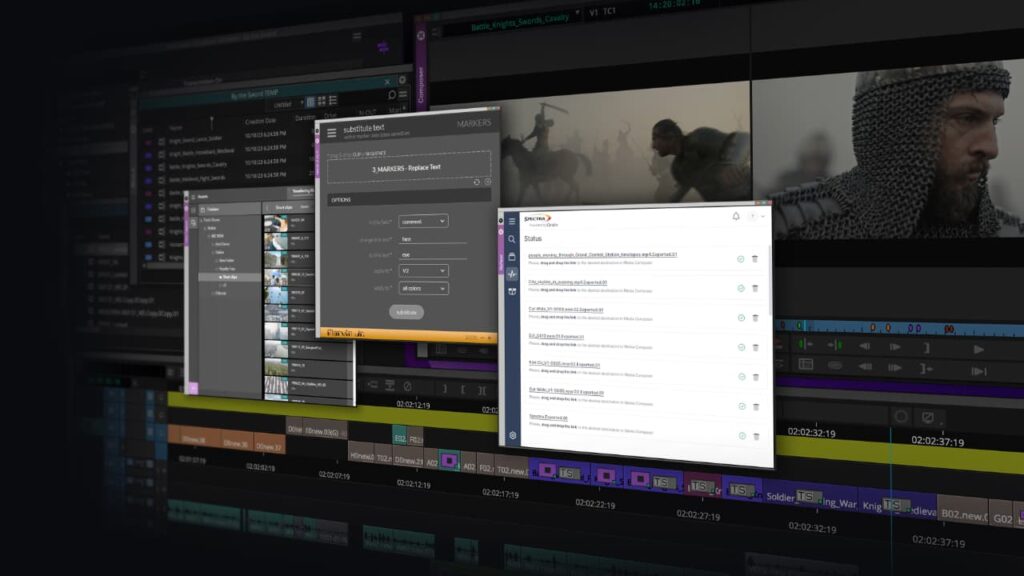Avid, a significant player in the media software market, is making noticeable strides in integrating artificial intelligence (AI) and automation into its suite of products, including Media Composer and Pro Tools. For many, Avid may not be the first company that comes to mind when discussing AI advancements. Historically, it adopted a cautious approach to this transformative technology, but recent developments indicate a shift in strategy, with Avid’s latest software versions prominently showcasing AI features designed to streamline editorial workflows.
One of the most significant updates within Avid’s toolkit is the introduction of native AI capabilities in popular applications. Media Composer and Pro Tools users can leverage enhanced functionalities, such as advanced speech-to-text transcription and automated workflows. Notably, the upgraded ScriptSync and PhraseFind features incorporate AI-transcribing capabilities that can aid in script creation and video editing processes. Users can expect faster turnaround times as these tools not only transcribe dialogues but also translate them into various languages, addressing the increasing demand for multi-language content.
Automation is becoming an essential pillar for optimizing workflows. With Pro Tools automation and scripting enhancements via Soundflow and the Pro Tools Scripting SDK, users can create custom shortcuts that reduce manual tasks. This step focuses on improving audio editing workflows and significantly boosts productivity by allowing creatives to develop tailored solutions that fit their specific needs. Avid NEXIS APIs further enhance this by automating media management and streamlining storage handling, which, for SMBs, translates to reduced operational overhead and a more efficient media lifecycle.
Additionally, Avid has partnered with over 600 global companies to enrich its ecosystem. These collaborations open up new avenues for users to integrate third-party AI tools directly into Media Composer. For example, Quickture enables fast transcription and sequence creation through natural language requests, vastly simplifying the editing process. Flawless offers an AI-assisted lip sync tool, allowing for easier manipulation of dialogue in post-production. Acclaim Audio’s tools enhance audio quality with features like noise reduction and volume leveling, ensuring that the final product meets high standards while amortizing the cost of quality assurance through automation.
As SMB leaders look to adopt these AI tools, understanding the implementation process is essential. The first step is to assess the existing workflows and identify bottlenecks where automation can have the most impact. This involves critically evaluating routine tasks that consume significant resources—such as transcribing meetings, managing project files, or editing video content. Once identified, companies can choose appropriate AI-integrated software tools like those offered by Avid or third-party developers.
Next, integrating tools like Zapier or Make can facilitate connections between different applications, automating workflows that involve multiple platforms. For instance, SMBs can set up a Zap that triggers a task every time a new video is uploaded to Media Composer, automatically generating a transcription in a designated folder using the built-in AI tools. This step reduces the time spent on repetition and minimizes the risks of human error, ultimately freeing up creatives to focus on high-level strategic initiatives.
Investments in AI and automation can yield a favorable return on investment (ROI). While initial costs may appear high, businesses will quickly find that reduced labor costs, improved accuracy, and higher productivity significantly outweigh the expenditures. Beyond tangible financial benefits, automation enhances employee satisfaction—creatives are less bogged down with mundane tasks and can engage in more stimulating work. However, while embracing automation offers substantial opportunities, it also brings risks such as over-reliance on AI systems and the potential for lost human oversight.
Clear, structured planning and a phased implementation process minimize risks while optimizing opportunities. Leaders should prioritize training for their teams on these new tools, ensuring they fully understand how to leverage AI effectively. Encouraging an environment that recognizes the importance of both human creativity and AI capabilities will allow teams to utilize automation to enhance their work rather than replace the inherent human touch that remains vital in creative industries.
In conclusion, as Avid’s tools exemplify, integrating AI into daily workflows is not just beneficial but necessary for maintaining competitiveness in the media landscape. The path to automation may have its challenges, but through careful orchestration of technology and training, SMBs can position themselves for substantial growth and efficiency gains moving forward.
FlowMind AI Insight: Embracing AI and automation is no longer just a competitive advantage—it’s a prerequisite for success in the digital age. By actively integrating these technologies into everyday workflows, SMBs can achieve not only operational efficiency but also pave the way for creative innovation and business growth.
Original article: Read here
2025-09-05 08:15:00

